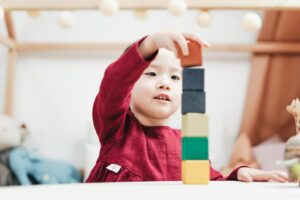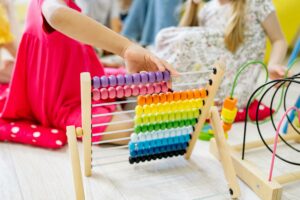As parents and guardians, we continuously seek innovative methods to nurture our children’s growth, especially during their formative years. One of our favorite things to teach our children at Pillar Kids Preschool is about primary colors. No matter if they want to be an artist or a superhero (common job choices for toddlers) we can incorporate colors into real-life scenarios and make it fun.

The Significance of Primary Colors
Primary colors—red, yellow, and blue—are the building blocks from which all other colors are derived. Familiarity with these colors not only enriches a toddler’s perception of the world but also lays the groundwork for understanding color theory, an essential element in artistic and cognitive development.
Understanding primary colors is fundamental in both the art world and everyday life. These colors serve as the building blocks from which all other colors are derived. By mixing primary colors, one can create a vast spectrum of secondary and tertiary hues, enabling endless possibilities for creativity and expression. Beyond artistic endeavors, primary colors play a crucial role in color theory, influencing so many aspects of life and they also have a psychological impact as well. Learning about primary colors not only enhances one’s appreciation for visual aesthetics but also provides the tools for effective communication, design, and personal expression.
Transformative Learning Environments
Imagine stepping into a classroom where each week, the environment transforms to highlight a different primary color. One week, the art area bursts into a sea of yellow, engaging the senses and sparking curiosity among the toddlers. The next week, it’s awash in blue, offering a new visual and sensory experience. This dynamic approach to learning captivates young minds, encouraging exploration and interaction with their surroundings in novel ways.
Enhancing Concentration and Creativity
The introduction of primary colors does more than just teach children about hues. It serves as a gateway to developing vital skills such as concentration and creativity. As toddlers engage with various materials, techniques, and designs within the color-themed weeks, they learn to focus their attention and express themselves uniquely. This process of exploration and creation is instrumental in fostering a sense of accomplishment and self-expression.
The Journey Beyond Colors
The adventure doesn’t end with recognizing and naming the primary colors. Toddlers begin to explore the magic of color mixing, discovering firsthand how new colors come to life. This not only deepens their understanding of colors but also encourages critical thinking and problem-solving skills as they predict and see the results of combining different hues.

A Pathway to Lifelong Learning
Introducing primary colors to toddlers is more than an educational activity; it’s a stepping stone towards lifelong learning. Through this simple yet profound exploration, children develop foundational skills that will benefit them across various aspects of their lives, from academic achievements to personal interests and beyond.
Incorporating primary colors into early childhood education is a powerful strategy to boost creativity and concentration among toddlers. This approach offers a multisensory experience that fosters intellectual, emotional, and artistic growth. As parents and guardians, embracing and supporting such educational initiatives can make a significant difference in our children’s developmental journey, paving the way for a future filled with color, innovation, and discovery.
If this was helpful please share and follow us on Instagram to stay connected.

